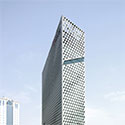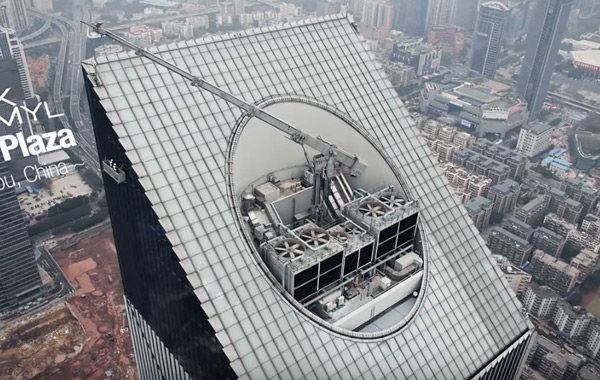Filter by
You must be a CTBUH Member to view this resource.

Leatop Plaza
Building
Completed
2012
Office
Concrete-Steel Composite
LEED Gold
302.7 m / 993 ft
64
5
838
33
6 m/s
121,835 m² / 1,311,421 ft²
You must be a CTBUH Member to view this resource.
You must be a CTBUH Member to view this resource.
Proposed
Construction Start
Completed
Usually involved in the front end design, with a "typical" condition being that of a leadership role through either Schematic Design or Design Development, and then a monitoring role through the CD and CA phases.
Usually takes on the balance of the architectural effort not executed by the "Design Architect," typically responsible for the construction documents, conforming to local codes, etc. May often be referred to as "Executive," "Associate," or "Local" Architect, however, for consistency CTBUH uses the term "Architect of Record" exclusively.
The Design Engineer is usually involved in the front end design, typically taking the leadership role in the Schematic Design and Design Development, and then a monitoring role through the CD and CA phases.
The Design Engineer is usually involved in the front end design, typically taking the leadership role in the Schematic Design and Design Development, and then a monitoring role through the CD and CA phases.
Other Consultant refers to other organizations which provided significant consultation services for a building project (e.g. wind consultants, environmental consultants, fire and life safety consultants, etc).
These are firms that consult on the design of a building's façade. May often be referred to as "Cladding," "Envelope," "Exterior Wall," or "Curtain Wall" Consultant, however, for consistency CTBUH uses the term "Façade Consultant" exclusively.
Material Supplier refers to organizations which supplied significant systems/materials for a building project (e.g. elevator suppliers, facade suppliers, etc).
You must be a CTBUH Member to view this resource.
Usually involved in the front end design, with a "typical" condition being that of a leadership role through either Schematic Design or Design Development, and then a monitoring role through the CD and CA phases.
Usually takes on the balance of the architectural effort not executed by the "Design Architect," typically responsible for the construction documents, conforming to local codes, etc. May often be referred to as "Executive," "Associate," or "Local" Architect, however, for consistency CTBUH uses the term "Architect of Record" exclusively.
The Design Engineer is usually involved in the front end design, typically taking the leadership role in the Schematic Design and Design Development, and then a monitoring role through the CD and CA phases.
The Design Engineer is usually involved in the front end design, typically taking the leadership role in the Schematic Design and Design Development, and then a monitoring role through the CD and CA phases.
The CTBUH lists a project manager when a specific firm has been commissioned to oversee this aspect of a tall building’s design/construction. When the project management efforts are handled by the developer, main contract, or architect, this field will be omitted.
The main contractor is the supervisory contractor of all construction work on a project, management of sub-contractors and vendors, etc. May be referred to as "Construction Manager," however, for consistency CTBUH uses the term "Main Contractor" exclusively.
Other Consultant refers to other organizations which provided significant consultation services for a building project (e.g. wind consultants, environmental consultants, fire and life safety consultants, etc).
These are firms that consult on the design of a building's façade. May often be referred to as "Cladding," "Envelope," "Exterior Wall," or "Curtain Wall" Consultant, however, for consistency CTBUH uses the term "Façade Consultant" exclusively.
Material Supplier refers to organizations which supplied significant systems/materials for a building project (e.g. elevator suppliers, facade suppliers, etc).
17 December 2010 - Event

19 October 2016 | Guangzhou
This project is located in the Tianhe district of Guangzhou, which is the area with the highest density in the city. There are Linhe village...

31 December 2012
Kevin Brass, Antony Wood & Marty Carver, CTBUH
For the first time in six years the number of tall buildings completed annually around the world declined as the effects of the global financial...
Though the form of Leatop Plaza may come across as straightforward, further inspection reveals the highly technical and energy-efficient façade system which the building employs. A triple-layer, vertical shingled glazing system with automated solar shades makes up this high-performance and intricate building envelope.
The approach to the tower is landscaped and leads up to a tall, glazed lobby which welcomes visitors. Echoing the canted form of the entrance glazing, the roof line angles to form a roof garden. The structural system of the tower relies upon multi-story, composite diagonal bracing instead of a typical concrete core, reducing the necessary wall thicknesses and creating more internal space.
Additionally, the tower strives for a 10% reduction in baseline energy consumption (based on ASHRAE 2007) and a 40% reduction in potable water usage though the high-performance façade, roof- and ground-level landscaping, and rain- and gray-water retention and use.

19 October 2016 | Guangzhou
This project is located in the Tianhe district of Guangzhou, which is the area with the highest density in the city. There are Linhe village...

24 June 2014 | Guangzhou
CoxGomyl provides integrated access solutions to the Leatop Plaza, a skyscraper in the Pearl River New Town area in Guangzhou, one of the top 3...

11 June 2013 | Guangzhou
In our journey from Chicago to New York, the United States, South Africa, Europe, the Mideast to Asia/China, the tall building has always been tied...

18 October 2012 | Guangzhou
Never predictable, never simplistic, Helmut Jahn has developed a complex portfolio of iconic buildings around the world. Standout projects include the Sony Center in Berlin,...

11 October 2011 | Guangzhou
Integrating and even celebrating the structure of a building through the architectural design often leads to dramatic and memorable buildings. To achieve the best outcome...

31 December 2012
Kevin Brass, Antony Wood & Marty Carver, CTBUH
For the first time in six years the number of tall buildings completed annually around the world declined as the effects of the global financial...

10 October 2011
Francisco J. Gonzalez-Pulido, Murphy Jahn
This presentation will focus in the aspects of our practice that deal with the issues that we consider relevant for the future of design and...
Subscribe below to receive periodic updates from CTBUH on the latest Tall Building and Urban news and CTBUH initiatives, including our monthly newsletter. Fields with a red asterisk (*) next to them are required.
View our privacy policy